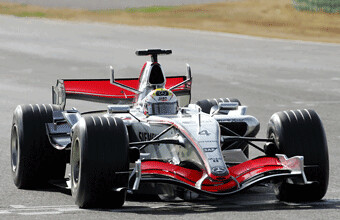Recently, Engadget reported that Nokia had decided to abandon MeeGo in favour of Windows Mobile. What was interesting is the reported process used to make this decision:
Elop drew out what he knew about the plans for MeeGo on a whiteboard, with a different color marker for the products being developed, their target date for introduction, and the current levels of bugs in each product. Soon the whiteboard was filled with color, and the news was not good: At its current pace, Nokia was on track to introduce only three MeeGo-driven models before 2014-far too slow to keep the company in the game.
This brought to mind some blog posts I wrote in early 2010 (now copied to this blog – see previous two entries). I talked about ‘critical mass’…
Critical Mass of Software: the state of a software system when the cost of changing it (enhancement or correcting defects) is less economical than re-writing it.
In the case of Nokia and MeeGo, there isn’t enough information to know if that’s what had happened but it does suggest, at least, that it was more economical to choose an alternative third-party OS than to continue with MeeGo. Integrating Windows Mobile is going to come at some cost, of course, but clearly they decided it was less than sticking with their current strategy.
This is an example of modern markets demanding more sustainable, adaptive and agile product development cycles, and a company recognising this and acting on it.
It is also a demonstration of how an ever-growing cost of change (e.g. through the number of bugs consuming resources that would otherwise be adding new value) is really deferring of cost – i.e. technical debt.
There are many arguments for ‘prudent’ acceptance of technical debt… This story, I think, is an example of where it wasn’t obvious when that debt was no longer prudent until it was too late for MeeGo as a product.
And this is one of the problems with some lean concepts applied to new products and start-ups. The advice is often to get feedback from the market quickly by hacking the product together and release as quickly as possible. The trouble is, at what point do we take a step back and change to more sustainable practices? Probably around the time the product is selling… but then we’re under pressure from competitors who have seen our innovations and want to copy them… so we’re tempted to keep hacking out more features only to find that the faster we hack the slower we go.
There is no magic answer, to the question “when do we stop hacking and start sustainably building?” We might wait until we’re making enough money to hire more people to do remedial work.
As soon as we find we’re enhancing a feature, it might mean that it’s a key part of our product – one we’re going to keep. We might then treat any code we touch during that enhancement as legacy code, building in the cost of remedial work into the enhancement.
Some would argue that it’s faster overall to never hack things in and to commit to sustainable product development practices from the get-go. This probably applies in many cases but especially to large complex products like operating systems.
Whatever the strategy used, there will come a point where you can’t hack in any more features. The question is, will you decide when that happens or will the cost of change decide for you.






